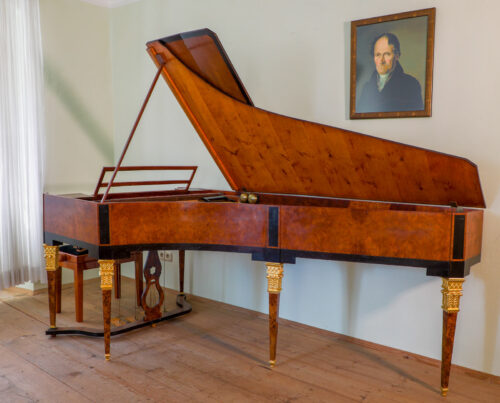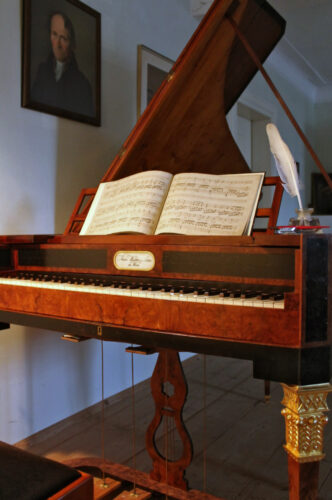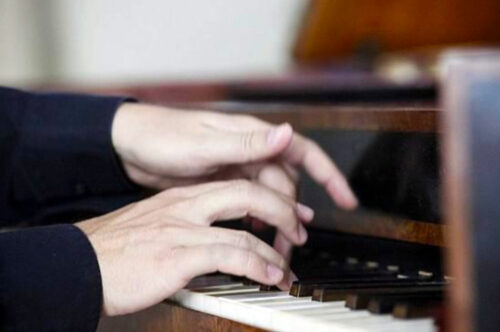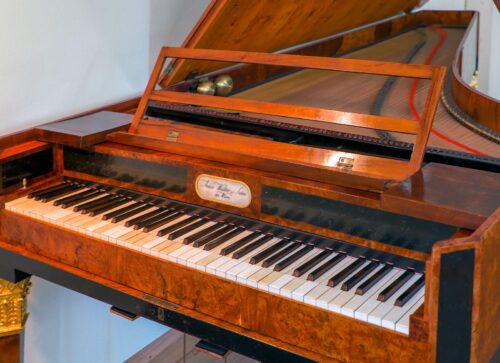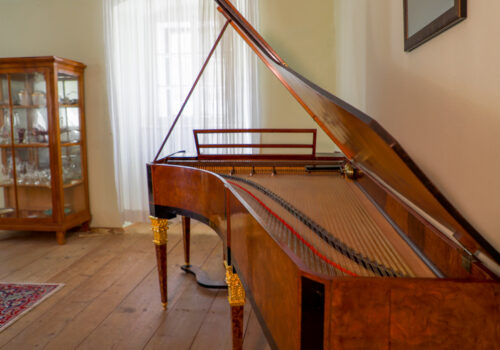Our special treasure is the fortepiano created by “Anton Walter und Sohn” in 1813/1814, which was discovered during refurbishing works.
Due to the transformation of the fortepiano into a particular solo instrument on the one hand, and Vienna developing into the center of piano manufacturing by the end of the 18th century on the other hand, the Austrian capital had become home to several hundreds of piano makers including internationally well-esteemed companies. One of them was Anton Gabriel Walter (1752-1826) from Germany who created instruments of unique qualities and sounds in the district of “Leimgrube”. The classical Viennese triumvirate – Joseph Haydn, Wolfgang Amadeus Mozart and Ludwig van Beethoven – highly respected the pianos by Walter, even in favour of other manufacturers. In 1792 under the name of “Anton Walter und Sohn”, Anton Walter started to manufacture fortepianos – like the one in our Biedermeier Room – together with his stepson, Joseph Schöffstoß. The pianos created by this company developed into a standard for the following generations of piano manufacturers because of their resonant sound and their high reliability and resilience due to the improved mechanical system.
The fortepiano in the Biedermeier Room with frequences between 415 and 417 Hz, ranges over 6 octaves (F1 – f4) and 6 pedals. Four of them are foot-operated like modern pianos:
- Damper
- Una corda
- Bassoon slide
- Janitscharen slide (3 steps)
Two additional timbres can be generated with the respective knee levers:
- Moderator (2 steps)
- Harp / lute slide
In order to produce richer timbre and stability, Anton Walter integrated three iron bars in the fortepiano, which, apart from that, is completely made of wood.
Among the numerous instruments that were created by this manufacturer, there are only a few left, whereas fortepianos from 1813/1814, like the one in our Biedermeier Room, are extremely rarely. After several years of work with great devotion, the Gerstlhaus fortepiano could had been restored to its original glory and sound by Albrecht Czernin from Vienna.
